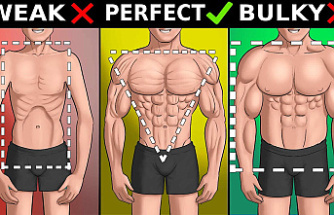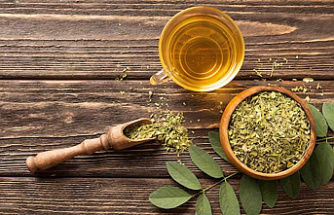Food safety is a critical concern that is a part of each aspect of the food industry, from processors and distributors to retailers. Ensuring food safety entails science-based procedures and best practices for the preparation, handling, and storage of food in a manner that doesn’t impair the health or safety of the employees bringing the food to market or the consumer.
Safe food handling requires monitoring and maintaining preventive measures in order to avoid an outbreak of foodborne diseases and ensure a safer food supply from farm to table. Continuously upgrading food safety procedures can also produce numerous social and economic benefits, including increased consumer confidence in the food supply chain, reduced burden on the US healthcare system, and improved productivity.
Ensuring food safety can be a complicated process with multiple factors to consider and concerns to address, which is where critical control points (CCPs) come into play. This article discusses CCPs and explains why they are a huge part of food safety.
What Is a CCP?
CCP stands for Critical Control Point. These points are points, procedures, tasks, or steps in the food process that must be undertaken to eliminate, prevent, or reduce a food safety hazard to a permissible level. In short, CCPs are stages in food handling, preparation, or storage for which preventive measures are applied to reduce or minimize certain food safety hazards, such as allergen cross-contamination, chemical contamination, or microbial growth.
How do you identify CCPs? It is imperative that you are aware of all food safety hazards or concerns that may potentially occur. For most food processors and handlers, these hazards can be classed as physical, chemical, or biological.
In many cases, a specific agent can be responsible for multiple food safety concerns. For instance, a piece of metal in a plate of food can simultaneously be a biological, physical, and chemical hazard, because it may be leaching harmful chemicals, harboring bacteria and other microbes, and could be swallowed thereby causing physical harm.
To effectively identify food safety hazards and CCPs, tracing the movement of food products and all ingredients from point of entry to the point at which the food is consumed is of paramount importance. For this reason, CCPs exist at practically every important stage of food processing and transport.
For instance, if you are a restaurant serving turkey sandwiches, you need to monitor purchasing (whole turkey, turkey sandwiches or ingredients), unloading, storage, cooking, preparation, plating, and serving. Along the way, governing agencies have instituted standards of food handling for nearly every step that must be followed. For example, the turkey must be exposed to a kill-step, in which it’s cooked at an internal temp of at least 165 °F, according to the USDA.
Note that some tasks carried out by food handlers, such as adding a spice, may not be critical to food safety. If a step, procedure, or task in food processing can be skipped without compromising food safety, then it is not one of the CCPs.
What Are Some Examples of CCPs?
Example #1: Food Purchasing
This is often the first stage where most restaurants and other consumer-facing, food-handling businesses check for potential hazards and identify respective CCPs. This marks the first touchpoint with the food.
A good example of CCP here is menu creation which entails going back down the supply chain to scrutinize specific manufacturers, distributors, and transporters for any loopholes that might jeopardize food safety. For instance, it might be important to make sure frozen and packaged foods are properly stored and temperature controlled.
Example #2: Thermal Processing
Examples of thermal processing steps include thawing, cooking, the kill step, and re-heating. For each of these CCPs, you must describe and document specific steps or procedures that will be taken, especially where equipment, quality control checks, and temperature controls are involved.
If you serve whole chicken at your restaurant, for instance; a classic CCP or task would be something like cooking it until the core temperature reaches 165°F, as per FoodSafety.gov guideline.
Allergen management might be necessary at this stage, too. For example, you want to make sure that food allergens are not cooked using the same equipment as non-allergenic food. The same goes for food segregation and preventing cross-contamination; you must create separate cooking areas for food that shouldn’t be cross-contaminated — i.e., have separate sections for meats, ready-to-eat foods, and raw foods.
Example #3: Food Storage
Do you have refrigerators, refrigeration units, or entire cold chain storage? This CCP is designed to make sure food storage is performed according to standard regulations laid out by the manufacturer and regulatory agencies like the Food and Drug Administration (FDA).
Proper food storage steps, tasks, and procedures should be put in motion to stop allergen cross-contamination, prevent microbial growth, and ensure optimal temperature controls. Storage containers, for instance, must be properly dated, covered, and cleaned.
Even shelf storage has stringent regulations. These areas must have appropriate integrated pest-control measures, correct floor clearance, and shelves must be properly mounted onto walls of a specific height made of specific materials. Furthermore, dry storage, cold storage, and hot storage must be segregated into different control environments and monitored accordingly.
Example #4: Testing Ingredients for Food Safety Hazards
The food testing process is in itself an important critical control point, but testing ingredients can be broken into multiple CCPs. In practice, each contaminant or hazard warrants its own testing procedure, so you will have separate CCP procedures for microbial infiltration, metal contaminants, allergens, toxins, chemical residues, and so forth.
What Is the Most Effective Way to Manage CCPs?
The most effective and efficient way to manage CCPs is to have a solid and actionable Hazard Analysis and Critical Control Point (HACCP) plan. HACCP is designed for application to all processes of the food supply chain, including production, packaging, preparation, and distribution among other aspects of food handling. Initially conceived by a group of food safety experts and NASA in the 1960s, the HACCP is a risk-focused food safety assessment plan that touches virtually ALL critical control points of food from harvest to purchase.
Dickson mentions that HACCP plans are important throughout the food industry. In essence, a HACCP plan highlights anticipatory measures that focus on preventing potential biological, chemical, and physical food safety hazards from happening during food processing. Waiting to respond after the fact can be devastating, as one can learn from listeria outbreaks in Canada and Australia.
A HACCP plan will prevent many food handling errors that can result in danger to both workers and consumers. Of course, there will still be some problems. However, with a HACCP plan in place, mishaps can be promptly identified and rectified. A good example of how this works can be seen in the handling of the 2019 E.coli outbreak that was quickly traced to Romaine lettuce from the Salinas Valley area in California.
Conclusion
Food safety requires constant vigilance. Each step in the food processing chain must be carefully monitored with a constant eye for improvement. CCPs are an important part of that process. These are steps, procedures, or points at which actions must be taken to prevent, eliminate, or minimize food safety hazards.
To identify CCPs, you must examine potential food hazards at every step from harvest to purchase. The most reliable way to do this and manage CCPs is to have a strategic HACCP plan that is applied throughout the entire food supply chain.
Date Of Update: 11 June 2020, 08:22











